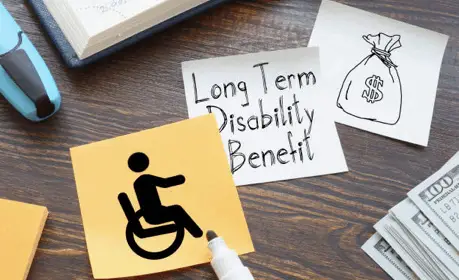Long-term disability insurance is a financial safety net. If a serious illness or injury keeps you from working for a long time, this type of insurance replaces part of your income. Many people don’t expect to become disabled, but life is unpredictable. Without a steady paycheck, it can become difficult to manage bills, food, and other basic needs.
If you’re unsure how to start the process or your claim has been denied, it’s a smart move to consult with long-term disability lawyers. They can help you understand your rights and assist with the application or appeal process.
What is Long-Term Disability Insurance?
Long-term disability insurance pays part of your income when a serious health problem or injury keeps you from working for an extended time. It usually starts after a short-term disability or sick leave ends. This kind of coverage is useful for many conditions (from back injuries and cancer to depression or chronic illness).
Most people don’t think they will ever need it, but the truth is that disability is more common than you might expect. According to the Social Security Administration, about 1 in 4 of today’s 20-year-olds will become disabled before they retire. This shows just how important it is to plan ahead.
Long-term disability insurance can be offered through group plans at work or bought individually. Individual plans often provide more control, but group policies may be easier to get and more affordable. No matter your job, whether you work in an office or school or run your own business, having this kind of insurance can be a financial lifesaver if health problems arise.
How Long-Term Disability Insurance Works
When you have a long-term disability policy and become unable to work, the insurance doesn’t begin to pay right away. Most plans have a waiting period, also called the elimination period, which often lasts 60 to 90 days. During that time, you may need to rely on savings or short-term disability benefits.
Once that period is over and your claim is approved, the insurance company begins sending payments. These monthly payments usually replace 50% to 70% of your salary. The exact amount depends on your policy and how much you were earning before you became disabled.
The length of time you can receive benefits also depends on your plan. Some policies will cover you for just a few years, while others can pay out until you reach retirement age. To qualify, your condition must prevent you from doing your job.
In some cases, if your condition is very serious, it must prevent you from doing any kind of work at all.
How to Apply for Long-Term Disability Benefits
If you need to apply, it’s important to act quickly.
- Gather all medical records: The first step is to visit your doctor and get strong medical proof that you’re unable to work. You’ll need to keep copies of medical tests, treatment notes, and doctor’s letters.
- Fill out the claim form: Contact your insurance provider to request a claim form. Fill it out carefully and include all the necessary documents, such as your medical records and work history. Once submitted, your insurance company will review the application, which can take several weeks.
- Appeal if necessary: If your claim is denied, don’t give up. Many people win their claims during an appeal. A lawyer who understands disability law can help you gather the right documents and fight for your rights.
Conclusion
Long-term disability insurance helps protect your income when your health no longer allows you to work. Especially in high-cost areas like California, being without pay for months or years could be financially damaging. With the right coverage, you can focus on healing instead of worrying about money.
If you need help filing or appealing a claim, don’t hesitate to consult with long-term disability lawyers. They can guide you through the process and help you get the support you deserve.

